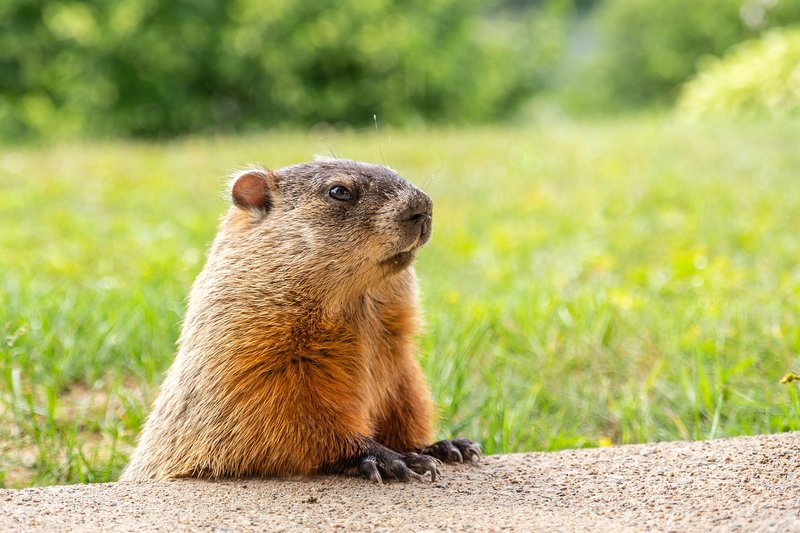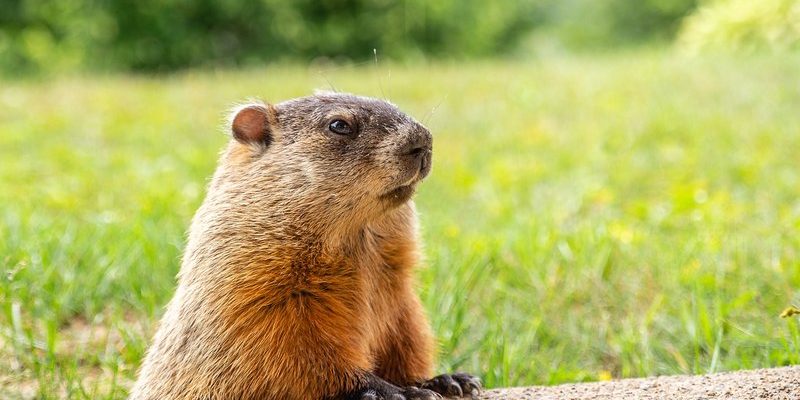
Imagine for a moment trying to live through a snowstorm without a cozy home. Groundhogs face this and more. They dig deep burrows that act like a warm blanket during cold months and a cool refuge in the summer heat. Let’s dive into how these amazing animals adapt, thrive, and show resilience in less-than-ideal conditions.
Burrowing: Their Underground Safe Haven
Groundhogs are expert diggers, and their burrow is like a tiny fortress. These tunnels can go as deep as 5 feet and stretch over 30 feet long! It’s not just about finding a place to hide; these burrows serve multiple purposes. They keep the groundhogs safe from predators, provide shelter from the elements, and help control body temperature.
During winter, a groundhog will retreat into this cozy underground space to hibernate. As temperatures drop, their metabolism slows down, and they enter a state of deep sleep. They can go months without eating, relying on the fat stored in their bodies. Picture this as nature’s way of hitting the snooze button on winter—smart, right?
In summer, the burrows provide a cool escape from the heat. Groundhogs are instinctively nocturnal during hotter months, which means they’re more active at night. By staying underground during the day, they avoid the sweltering heat, only emerging when the sun sets.
Diet and Foraging: Nature’s Buffet
Groundhogs are herbivores, which means they enjoy a diet full of plants. They munch on everything from grass and clover to fruits and vegetables. Honestly, if you were a groundhog, you’d be living your best life among all that greenery.
Their foraging habits are vital for survival, especially in climates that experience distinct seasons. During spring and summer, groundhogs feast on fresh greens to bulk up for the colder months. They’re basically nature’s little gardeners, making sure to eat a balanced diet so they can store enough fat.
What’s really interesting is how they prepare for the fall. Groundhogs are smart enough to stockpile food in their burrows. This means they gather extra snacks when there’s an abundance of food and store them for the winter. It’s like having a mini pantry in their underground home!
Temperature Regulation: Staying Cool or Warm
Here’s the thing: groundhogs have a fantastic ability to regulate their body temperature. This skill is crucial for survival in extreme climates. When it gets too hot, they can lower their metabolism and stay underground, where it’s cooler. This helps prevent overheating, which is a real danger for small mammals.
On the flip side, in freezing temperatures, groundhogs have a unique hibernation process. They enter a state of torpor, where their body temperature drops, heart rate slows, and they expend minimal energy. It’s like turning their bodies into a low-power mode to conserve resources until spring arrives!
Their thick fur also plays a significant role in temperature regulation. It provides insulation against the cold and helps protect them from the sun’s rays in summer. Groundhogs know how to dress for the weather, even if they’re not picking out outfits like you and me.
Predator Awareness: Staying Safe
Groundhogs aren’t just carefree munchers; they have to be alert to survive. Predators including foxes, coyotes, and even eagles see these little guys as snacks. So, how do groundhogs stay safe in such a dangerous world?
First off, they rely on their keen sense of hearing. Groundhogs have excellent hearing and can detect danger from a distance. When they sense a predator nearby, they’ll quickly retreat to their burrow or freeze in place to blend into their surroundings.
Additionally, they use alarm calls to warn other groundhogs of potential threats. Imagine a little groundhog shouting, “Danger, danger!” to its friends! This sense of community helps keep the entire colony safe.
Adaptability: A Key to Survival
Groundhogs are the champions of adaptability. They thrive in various environments, from grassy meadows to wooded areas. Their ability to adjust their behavior and diet according to the season is impressive and essential for survival.
In urban areas, groundhogs have learned to coexist with humans. They might dig in gardens or parks, and while this can be frustrating for gardeners, it shows how resourceful they are. Groundhogs don’t shy away from taking advantage of new food sources, making them resilient in changing environments.
This adaptability is critical in our fast-changing world. Climate change and habitat loss can be tough on wildlife, but groundhogs continue to find ways to survive. They teach us a valuable lesson about resilience and finding new paths to thrive.
Groundhogs are much more than cute, furry animals; they’re master survivalists! Their clever burrowing techniques, smart foraging habits, and excellent temperature regulation are just a few ways they conquer harsh environments. They remind us that resilience often comes naturally—if we’re willing to dig a little deeper.
So, the next time you see a groundhog, take a moment to admire its strength and adaptability. These little creatures showcase nature’s brilliance in how they survive and thrive, even in the face of adversity. After all, it’s not just about making it through—it’s about living well, no matter the conditions.

